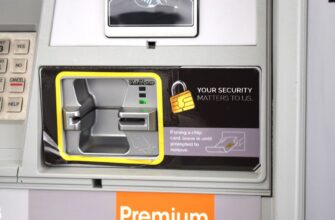As stablecoins like USD Coin (USDC) become integral to crypto portfolios, securing these digital assets is non-negotiable. Hardware wallets provide military-grade protection by storing private keys offline, shielding your USDC from hackers and online vulnerabilities. This guide explores the top hardware wallets optimized for USDC storage, helping you safeguard your stablecoin investments with confidence.
Why a Hardware Wallet is Essential for USDC Security
USDC combines dollar stability with blockchain flexibility, but like any cryptocurrency, it’s vulnerable to cyber threats. Hardware wallets mitigate these risks through:
- Air-Gapped Storage: Private keys never touch internet-connected devices
- Tamper-Proof Architecture: Physical security chips resist malware
- Transaction Verification: Manual approval on-device prevents unauthorized transfers
- Recovery Options: Seed phrases restore access if devices are lost
Since USDC primarily operates as an ERC-20 token on Ethereum, compatibility with Ethereum-based wallets is crucial for seamless management.
Top 4 Hardware Wallets for USDC Storage
1. Ledger Nano X
- Key Feature: Bluetooth connectivity for mobile management
- USDC Support: Native integration via Ledger Live app
- Security: CC EAL6+ certified secure element
- Best For: Active traders needing mobile access
2. Trezor Model T
- Key Feature: Touchscreen interface for intuitive control
- USDC Support: Full ERC-20 compatibility via Trezor Suite
- Security: Open-source firmware with passphrase encryption
- Best For: Transparency-focused users
3. CoolWallet Pro
- Key Feature: Credit-card portability with military-grade encryption
- USDC Support: Seamless integration with CoolWallet App
- Security: EAL6+ secure element + biometric verification
- Best For: Travelers and on-the-go users
4. Keystone Pro
- Key Feature: QR-code air-gapped transactions
- USDC Support: ERC-20 management via MetaMask integration
- Security: True offline signing with anti-tamper seals
- Best For: Maximum isolation from online threats
Choosing Your Ideal USDC Hardware Wallet: 5 Key Factors
- Token Compatibility: Verify explicit ERC-20/USDC support
- Security Certifications: Look for EAL5+ rated secure elements
- User Experience: Evaluate companion app functionality
- Recovery Protocols: Ensure robust seed phrase backup systems
- Multi-Chain Support: Consider future-proofing for other blockchains hosting USDC
How to Store USDC on Your Hardware Wallet
Follow these steps for secure USDC storage:
- Initialize device and record recovery phrase offline
- Install companion software (e.g., Ledger Live)
- Connect wallet via USB/Bluetooth
- Add Ethereum account (USDC uses ETH addresses)
- Copy your ETH receive address
- Transfer USDC from exchange to this address
- Verify transaction on hardware display before confirming
Always send a test transaction before moving large amounts.
USDC Hardware Wallet FAQ
Q1: Can I store USDC on any Ethereum-compatible hardware wallet?
Yes. Since USDC is an ERC-20 token, any hardware wallet supporting Ethereum (like those above) can store it. Always verify token support in the wallet’s documentation.
Q2: What happens if USDC migrates to other blockchains?
Leading wallets like Ledger and Trezor support multi-chain USDC (e.g., Solana, Polygon versions). Your device will generate compatible addresses when you install relevant blockchain apps.
Q3: Are hardware wallets compatible with USDC staking?
Some wallets like Ledger integrate with staking platforms. However, staking requires delegating tokens to smart contracts, which carries separate risks. Research protocols thoroughly before staking from cold storage.
Q4: How often should I update my hardware wallet firmware?
Install updates immediately upon release. Manufacturers patch vulnerabilities and add features (like new USDC standard support) through firmware updates. Always verify update authenticity via official channels.
By choosing a dedicated hardware wallet for your USDC, you transform stablecoin holdings into truly secure digital dollars. Prioritize devices with proven security architectures and intuitive interfaces to ensure your assets remain protected yet accessible in the evolving crypto landscape.








